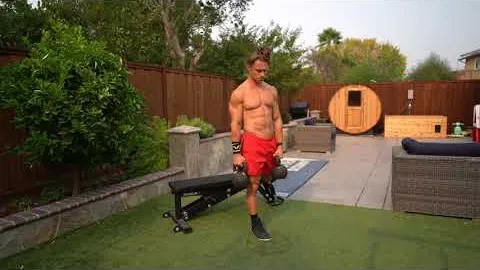
The Rear Foot Elevated Kettlebell Single Leg RDL exercise is a highly effective exercise that targets the hamstrings, glutes, and lower back muscles. It is a variation of the traditional kettlebell single leg RDL exercise that specifically places emphasis on the rear foot. This exercise helps to build strength, stability, and improve balance, making it a popular choice among athletes, strength trainers, and fitness enthusiasts.
To perform the Rear Foot Elevated Kettlebell Single Leg RDL exercise, you will need a kettlebell and a stable elevated surface, like a weight bench or a step. Here are the steps to properly execute this exercise:
To make the most of the Rear Foot Elevated Kettlebell Single Leg RDL exercise, it is essential to ensure proper form and execution. Here are a few tips to keep in mind:
The Rear Foot Elevated Kettlebell Single Leg RDL exercise is a highly effective exercise that targets the hamstrings, glutes, and lower back muscles. By consistently incorporating this exercise into your workout routine, you can strengthen your lower body, improve stability and balance, enhance posture, and reduce the risk of injuries. Remember to always practice proper form and consult with a professional trainer or coach if necessary. Start slow, gradually increase weight, and enjoy the benefits that this exercise can bring to your fitness journey.
If you're looking for a gym, fitness club or yoga studio, you've come to the right place.
You can find information about gyms in your area. Browse catalog of gyms and find gyms with classes which are you looking for.
On gym page you can find simple information like address, phone or website. You can find list of available classes. You can check availability of personal training or small group classes. On place page you can also see information about open hours.
You can find gyms near you with amenities, courts, studios and equipments.
Use our map to find gym at your city or district.
In Gym Navigator you can find list of exercises with movies for many body parts.
You can browse exercises catalog and find exercises the best of you.
You can also find exercises grouped into workout plans, which you can use to improve you body. Each routine show you exercises one by one and give you possibility to count you progress and count down rest time.